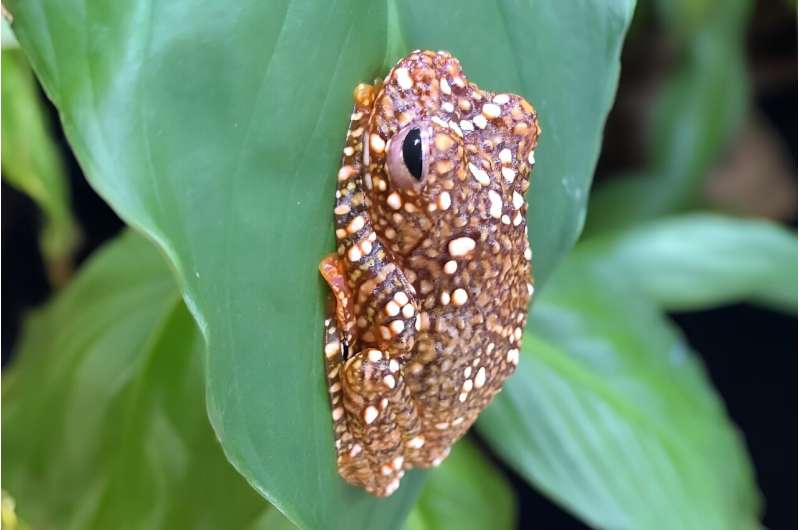This article has been reviewed according to Science X's editorial process and policies. Editors have highlighted the following attributes while ensuring the content's credibility:
fact-checked
peer-reviewed publication
reputable news agency
proofread
Young frogs may camouflage selves as animal poo: study

The young offspring of a frog native to Southeast Asia display an "unusual color pattern", probably to camouflage themselves "as animal droppings" to escape predators, according to a study.
A team of researchers studying juvenile Wallace's flying frogs—which are bright red with small white dots—made the findings thanks to an experiment at Vienna's Schoenbrunn Zoo, the zoo said on Thursday.
"The young frogs probably count on the fact that they will be seen but considered something inedible," University of Vienna researcher Susanne Stueckler said.
She and several others recently published their findings in the journal Behavioral Ecology and Sociobiology.
To test their hypothesis that the frogs were trying to escape predators, the researchers created differently colored wax frog models and placed them in the zoo's rainforest house.
The house "contains a diverse community of avian predators that are well known to use color vision to detect frogs as prey", the study notes.
It found that the attack rate was significantly greater for red than for green but was reduced by half when red models had white spots.
"We show that the unusual color pattern of juveniles likely functions as a masquerade of animal droppings," the researchers said.
"(It may) function as anti-predator strategy... so that predators misidentified them as inedible objects," they added.
"To our knowledge, this is the first experimental exploration of a vertebrate masquerading as animal droppings."
The frogs' spots disappear after one year, "when individuals mature into adults and develop their iconic emerald green color".
Wallace's flying frogs can glide 16 meters (52 feet) from tree to tree thanks to skins between their toes and appendages on their arms and legs.
More information: Susanne Stückler et al, From masquerading to blending in: ontogenetic shifts in antipredator camouflage in Wallace's flying frogs, Behavioral Ecology and Sociobiology (2023). DOI: 10.1007/s00265-023-03376-w
Journal information: Behavioral Ecology and Sociobiology
© 2023 AFP




















